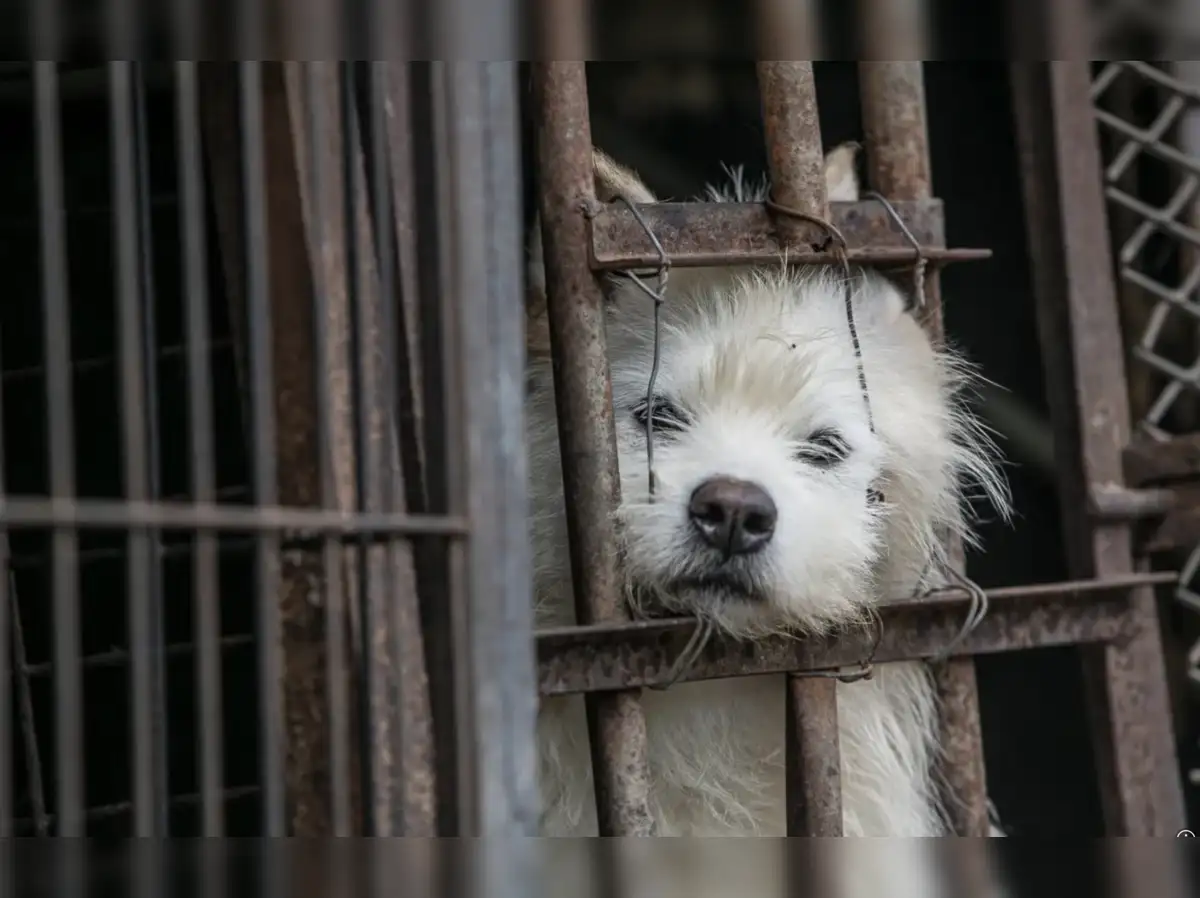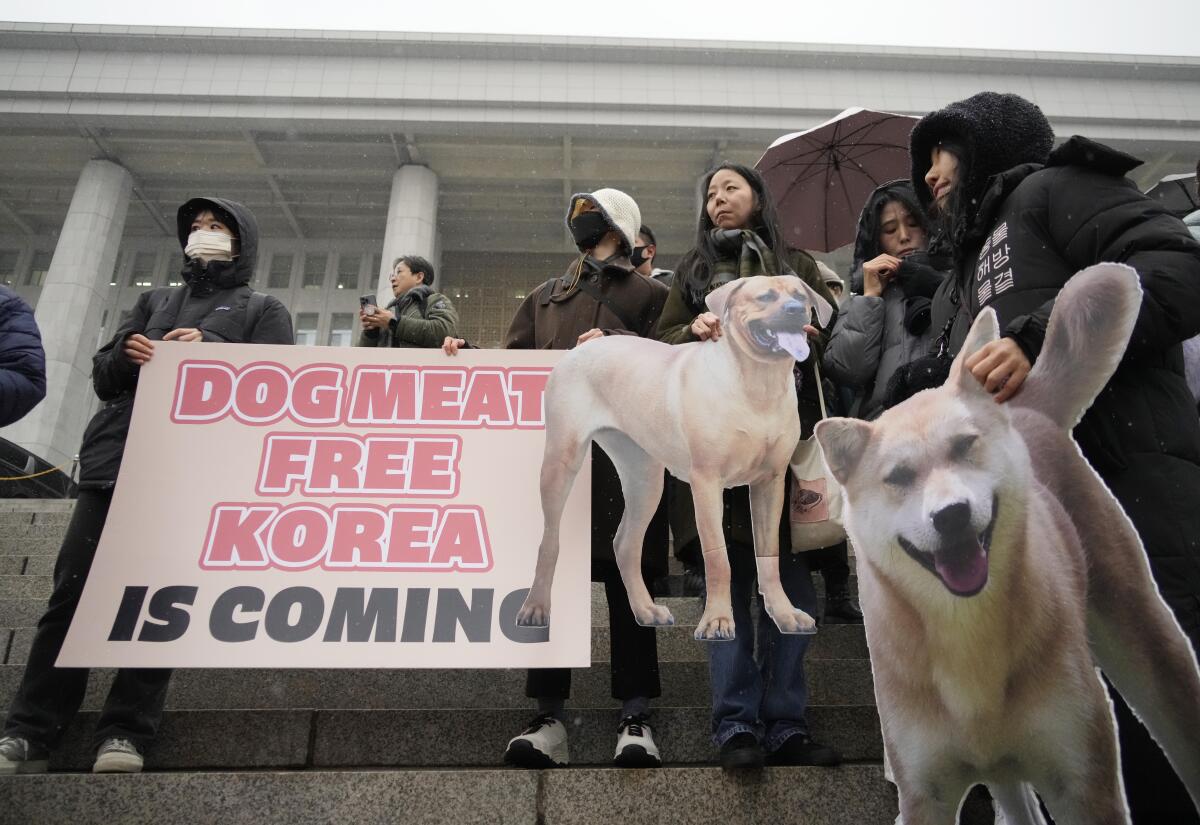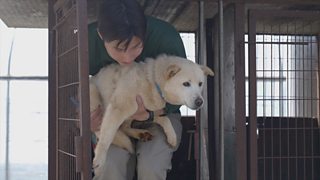Seoul, South Korea — South Korea’s landmark nationwide ban on dog meat consumption has ignited a new crisis: what to do with the nearly 500,000 dogs trapped in the country’s defunct meat farms.
The legislation, passed in January 2024, gives farmers until February 2027 to shut down operations. But halfway through the grace period, thousands of animals remain unrehomed, and overwhelmed shelters are facing the grim reality of mass euthanasia.

A Ban Without a Clear Plan
The law was heralded as a milestone for animal rights. Yet activists and farmers alike say there’s been no viable strategy for relocating the dogs bred for meat, many of which are large, mixed-breed animals with poor adoption prospects.
“The government passed the law without any real plan,” said a meat farmer known only as Chan-woo, who has 600 dogs and just 18 months to find a solution. “Now they’re saying they can’t even take the dogs.”
Animal rights group Humane World for Animals Korea (Hwak) confirms this concern. “The rescue element is severely underdeveloped,” says campaign manager Lee Sangkyung. “We’ve lobbied hard to add a clear plan for the animals left behind.”
From Farm to Nowhere
Many dogs rescued from farms face and are labeled as “dangerous” breeds, like tosa-inus, which require special government permits in urban households. Others are seen as diseased or traumatized, making them undesirable pets in Korea’s urban apartment culture.
“We’ve saved 2,800 dogs since 2015,” says Lee, “but NGOs alone can’t manage the 500,000 dogs still on farms.”
The Ministry of Agriculture, Food and Rural Affairs (Mafra) has offered shelters expansion grants and ₩600,000 (~$450) per dog to farmers who exit the business early. But many claim the amount is insufficient to cover the cost of rehoming or maintaining the animals.

Rescue or Euthanasia?
Despite official reassurances that euthanasia “is not part of the plan,” activists and insiders admit that it’s inevitable for thousands of dogs with no takers and no shelter space.
“If dogs are left behind, it’s heartbreaking, but they will be euthanized,” said Cho Hee-kyung, head of the Korean Animal Welfare Association, in a 2024 statement.
Veterinary experts, like Dr. Chun Myung-Sun of Seoul National University, argue for transparency. “If we rescue dogs from slaughter only to euthanize them, it’s understandable people feel outraged,” she said.
Exporting Compassion
Some animal welfare groups are sending rescued dogs to countries like the US, UK, and Canada for adoption. In 2023, Hwak rescued 200 dogs from a farm in Asan, all of which were successfully rehomed overseas.
“When I saw them handling the dogs so gently, I was moved,” said former meat farmer Yang Jong-tae. “They treated the dogs like people. We never did that.”
Farmers in Crisis

For those still in the industry, financial desperation looms. Reverend Joo Yeong-bong, who is also president of the Korean Association of Edible Dogs, says farmers are “drowning in debt” and unable to find new employment.
“We can’t sell the dogs, we can’t shut down, and some can’t even eat,” he said. “By 2027, I believe something terrible will happen.”
Public Opinion Shifts
The ban reflects a cultural shift. A 2024 government poll showed only 8% of South Koreans had consumed dog meat in the past year, down from 27% in 2015. But critics question the ethical inconsistency.
“If eating dogs is banned, why not pigs or cows?” asked Mr. Yang. But experts like Dr. Chun argue that dog meat lacks sanitary regulation, unlike other meats in the formal food system.
Read More:

While the world celebrates the end of dog meat farming in South Korea, the fate of the dogs themselves remains deeply uncertain. Without robust rescue frameworks, what began as a humanitarian milestone risks becoming a logistical and ethical disaster.









